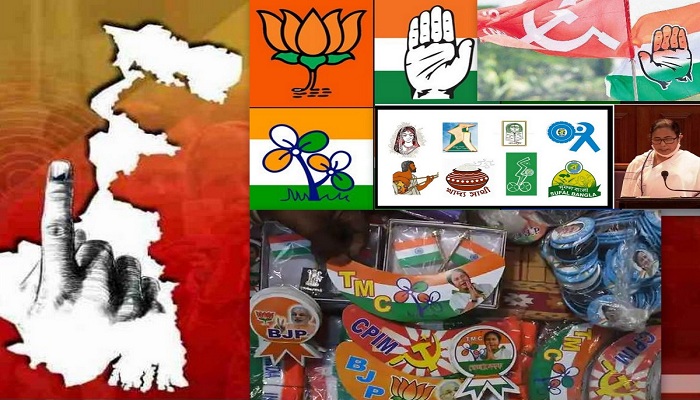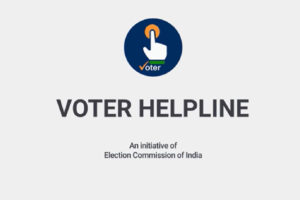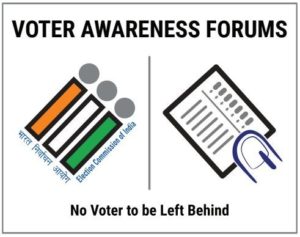This year’s assembly election in West Bengal is a high pitched battle between TMC, which is looking forward to third term and the saffron camp getting desperate to make inroads into the state. TMC led by Mamata Banerjee gets uncomfortable on questions related to accountability, the continuance of Syndicate mafia, intra-party factionalism, promises of reversing the deindustrialization under Left front & exclusive decision making among Ms Banerjee, Abhishek Banerjee and poll-strategist Prashant Kishor. The last factor was a dominant reason for many turncoats in the party to jump-boat to BJP using the window of opportunity of securing one’s political future. The BJP gets piqued and choked up on questions related to its rhetoric which fuels communalism, religious polarization, zero works in improving the national economic situation, turning a literal blind eye to Bengal during Amphan and Corona crises, clamping down on voices of dissent and differences, which is central to the social-psychology of West Bengal.
Also See: West Bengal 2021: Battleground for BJP and TMC
Poll-related violence in Nandigram
At the centre of the second phase of the high-pitched and to some extent personal battles of the West Bengal election, was the assembly seat of Nandigram, which saw spats of violence. At this seat, CM Banerjee is facing her former party-leader & her protégé, Suvendu Adhikari. The place failed to shrug off violence despite adoption of unprecedented measures by the Election Commission of India to maintain peace for a free and fair election.
Charges and counter-charges of intimidation of voters, rigging were volleyed by both BJP and TMC at each other. Incidents of polling agents being driven out & assault on voters and journalists were also exchanged throughout the day of the second-phase poll.
Also See: What are the problem areas of TMC and the chances of BJP in this election season in West Bengal
At Boyal, the day of second-phase poll saw supporters of both the parties clash over charges of rigging. As early as 8am, both Trinamool congress and BJP alleged that their polling agents were not being allowed to sit inside several several polling stations. Political agents were driven away multiple times at Boyal-I and Boyal-II. Trinamool alleged that their polling agents from as many as 80 booths had been driven out. Forces were mobilized to reduce the figure to 8.
Also See: Would West Bengal election really be a three-way fight after the defections?
In this regard, TMC lodged complaints with the Election Commission of India. BJP complained that in as many as 122 booths, their agents had been driven out. Suvendu Adhikari rushed to Patrapara, where a BJP-supporter Uday Shankar Dobe committed suicide by hanging himself. His daughter Sabita alleged that her father was intimidated by TMC-supporters. At Khadambari in Nandigram block I, some Trinamool supporters alleged that BJP was distributing puffed rice to allure voters. Pradip Mandal, a local panchayat official, stated that the saffron camp was doing this, triggering chaos, given the sure-shot probability that BJP would lose the election and its utter desperation.
Also see: Trilateral fight in West Bengal election 2021
At Nandigram, West Bengal Chief Minister & TMC supremo-Mamata Banerjee had to be rescued by the Central paramilitary forces after having to stay confined for more than two hours at a polling booth amid an extremely tense face-off between BJP and Trinamool Congress supporters. The CM told the governor that the situation was a failure of the Election Commission, which was in charge of the law and order. But instead of responding to the situation, Governor Dhankar, who has shown his orientation towards the saffron camp time and agains, simply tweeted.
Also See: What do the manifestos promise as election begins in West Bengal
The wheelchair-bound Chief Minister added, “Anything might happen at any moment. There is total breakdown of law and order.” She also added that she was escorted out by the security forces, who managed to bring the situation under control after long-drawn negotiations with the villagers. Sitting outside the polling site, she wrote a complaint to Election commission, which might be the first instance of its kind in independent India.
Outside the polling station, the security forces were caught on camera shuttling between the two slogan-shouting groups who faced each other across a field, trying to broker peace.
Voter-turnout
Over 83.95 percent voter turnout was recorded till 6 PM with the highest voting in Bankura and the lowest in Paschim Medinipur. Nandigram, where chief minister Mamata Banerjee is contesting against Suvendu Adhikari, recorded 80.79 percent turnout. In total, 43 Ballot Units and CUs each were replaced following glitches across the state. A total of 192 VVPATs were replaced during polling of the second-phase.
Prominent among the incidents of violence was the case where stones were thrown at cavalcade of Suvendu Adhikari. However, it missed and hit media car instead. The incident took place in Takapura area of Nandigram. Also, a vehicle of media personnel was attacked near booth number 170 in Kamalpur, Nandigram. Suvendu Adhikari claimed that the TMC cadres were behind the attack.
Past trends’ analysis
The long-term trends of Assembly elections in West Bengal have shown that the incumbent government does return to power if it has performed reasonably well, has a credible mass leader and a believable political narrative. Those who do psephology know that the opinion polls are relatively weaker than the exit polls. In both opinion and exit polls, the most challenging task for pollsters is to accurately project seats rather than find out the probability of parties getting the exact percentage of votes.
In the recent past, political psephology has evolved & developed as a specialized field in political science to correct past mistakes of analyzing and calculating voting behaviour. Methods of political psephology are derivatives of empirical political science and rational choice theory, rooted in mainstream Western social sciences. However, in the last few years, it has been noticed that the election results in the West and South Asian countries have surprised psephologists. In West Bengal, too, this has happened before, not once but twice. It was in 2001 & 2016 assembly elections.
Long-term trends of assembly elections in West Bengal show that the BJP gets fewer votes in percentage terms compared to parliament elections. A look at some figures of the past 12 years, when the independent strength of the Left has been dwindling provides some necessary insights. BJP got 6.14 percent votes in the 2009 Lok Sabha elections. But in the 2011 Vidhan Sabha elections, it got only 4.06 percent votes. In the 2014 elections, it shot up to 17.02 percent votes in the wake of a pro-Modi and an anti-Congress wave in the Lok Sabha election. The vote share of BJP came down to 10.28 percent in the 2016 Vidhan Sabha elections. In 2019, the party surprised many pollsters and political pundits when its vote share touched 40.25 percent.
In Bengal, there was no alliance between the Left and the Congress. As a result, the anti-Trinamool vote got consolidated behind the BJP. Finally, the election was grounded on the RSS’s core issues, and emotions, centred on the Ram Mandir, CAA-NRC, abrogation of Article 370, and issues of national security and terrorism following the Pulwama attack were whipped up.
The state’s Opposition leader had said during the 2016 assembly elections that the Left-Congress alliance would get 200 seats. It ended up with just 77. In the run-up to the current elections, the Union home minister of India has said that the BJP will win 200 seats. This has been contested by the poll-strategist & I-PAC chief-Prashant Kishor, who has asserted that the BJP will not touch even 100 seats.
On an overall basis, the state has shown differences in voting behaviour for the LS polls and assembly election and this assembly election might also throw in surprising facets about the political choices and behavioural choices during elections.





